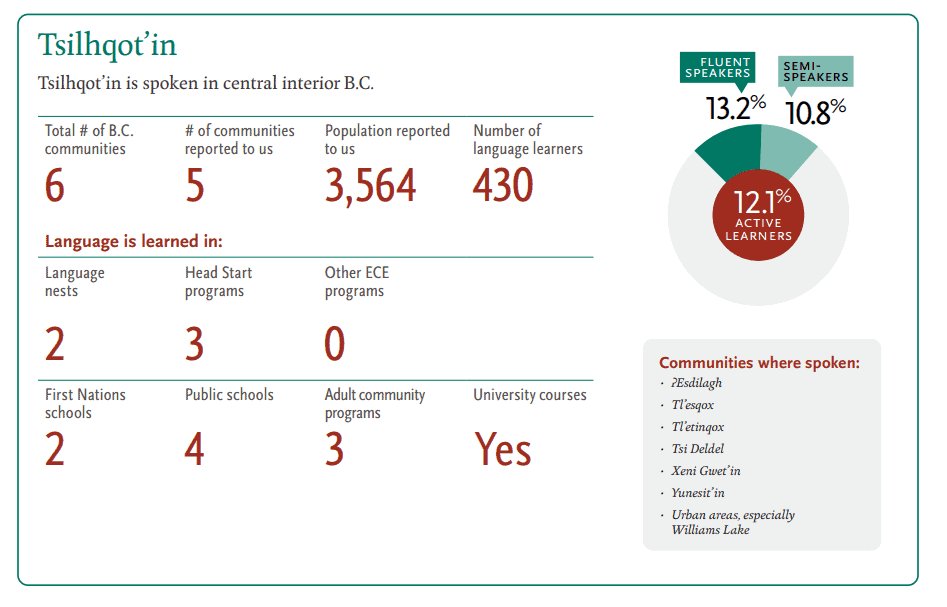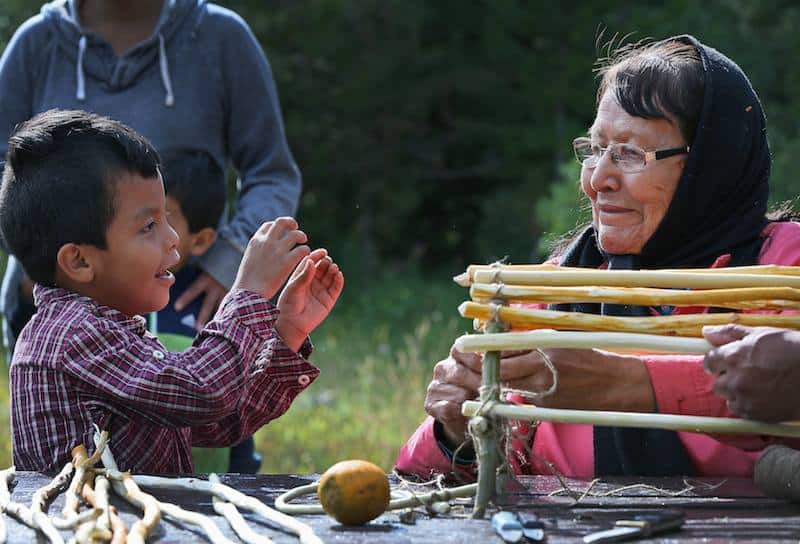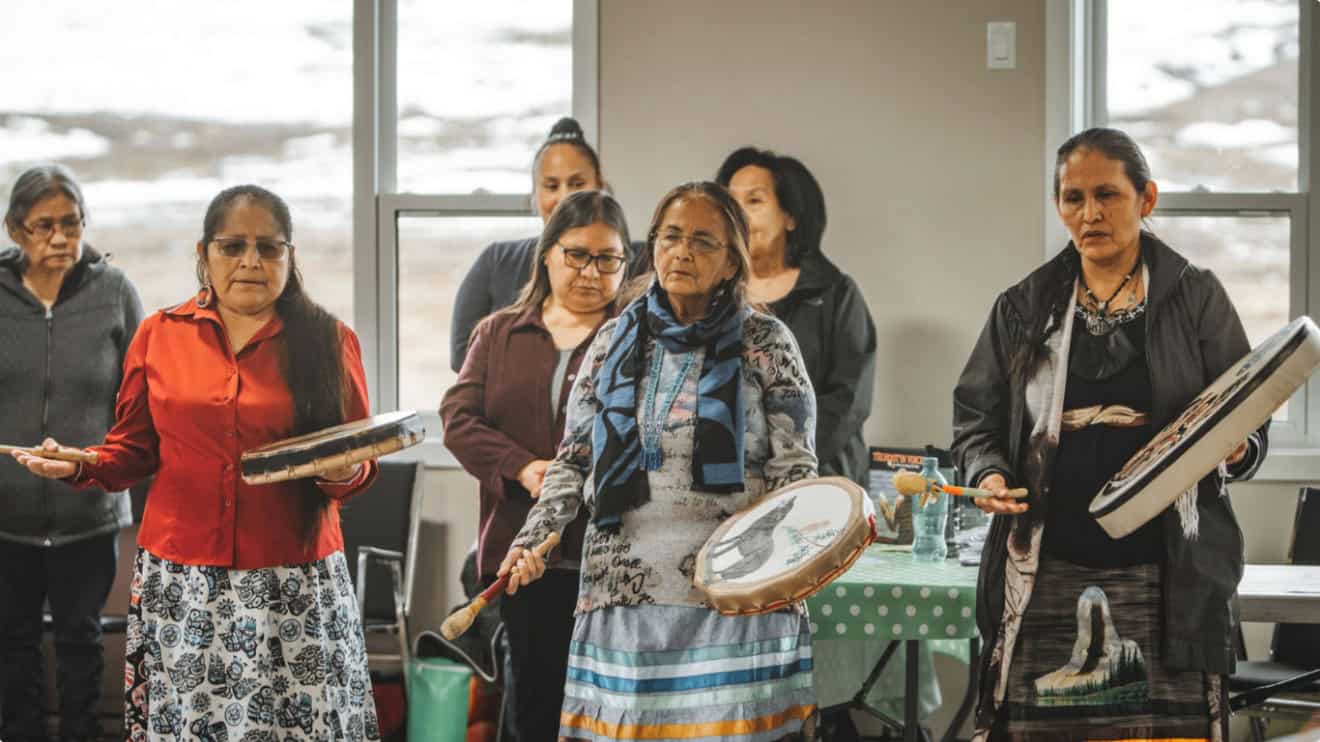Home Our Nation Language and Culture
Language and Culture
Tŝilhqot’in National Government Language and Culture
The Tŝilhqot’in language and culture have persisted through Canada’s dark history of the Residential School System and colonization. To understand the Tŝilhqot’in language is to understand the people. Our language is how we understand the nen (lands, water & resources). For many of our people, English is a second language and some of our Elders have only ever known the Tŝilhqot’in language. Efforts to revitalize the language are continuing and growing through such projects as the Tŝilhqot’in Community Radio and recognition of original place names in our territory.
Resources

First Peoples Cultural Council Language Statistics (2022)
Stories
The Tŝilhqot’in landscape tells numerous stories. When we see certain land features, like a specific rock, mountain or river, we have a story that connects us to that area that has been passed down from our ancestors. Stories have specific cultural protocols connected to them. Some of our most known stories include:
- The story of Tŝ’ilʔos
- Tŝiqi
- Lhin Desch’osh
Shen (Song)
Throughout history, whenever our people gather, we gather with song and food. Drumming is a way to connect our people. Below are some of our common drum songs.
- Danzen Shen
- Warrior Shen
- Women’s Warrior Shen
Gathering
The gathering of food long defined us as a people as we moved with the seasons in order to ensure access to food that was in season. This includes such things as Ts’eman (Salmon), deer berries, and wild potatoes.

